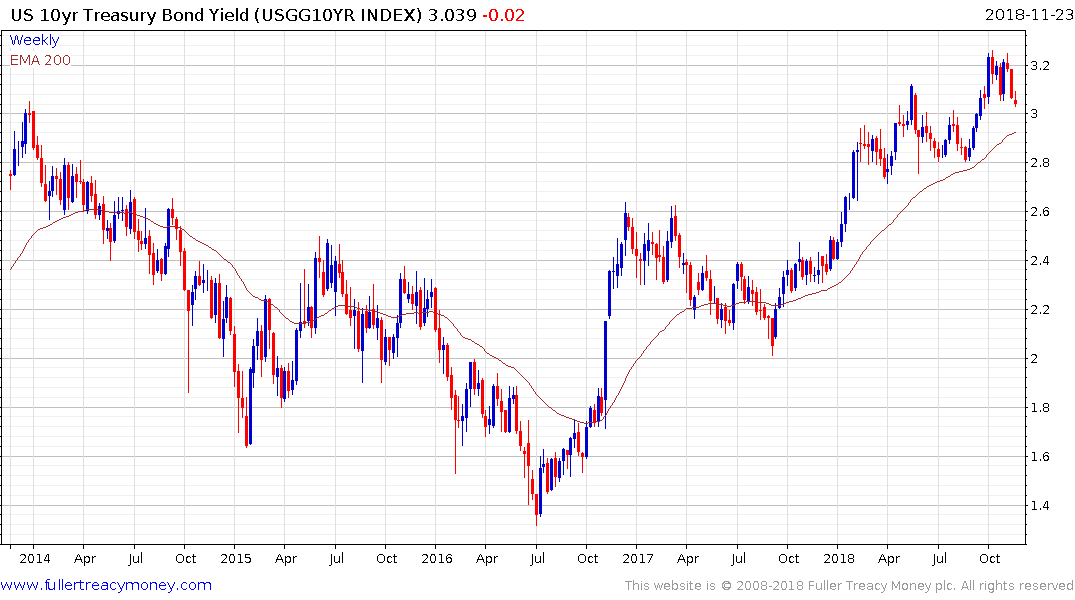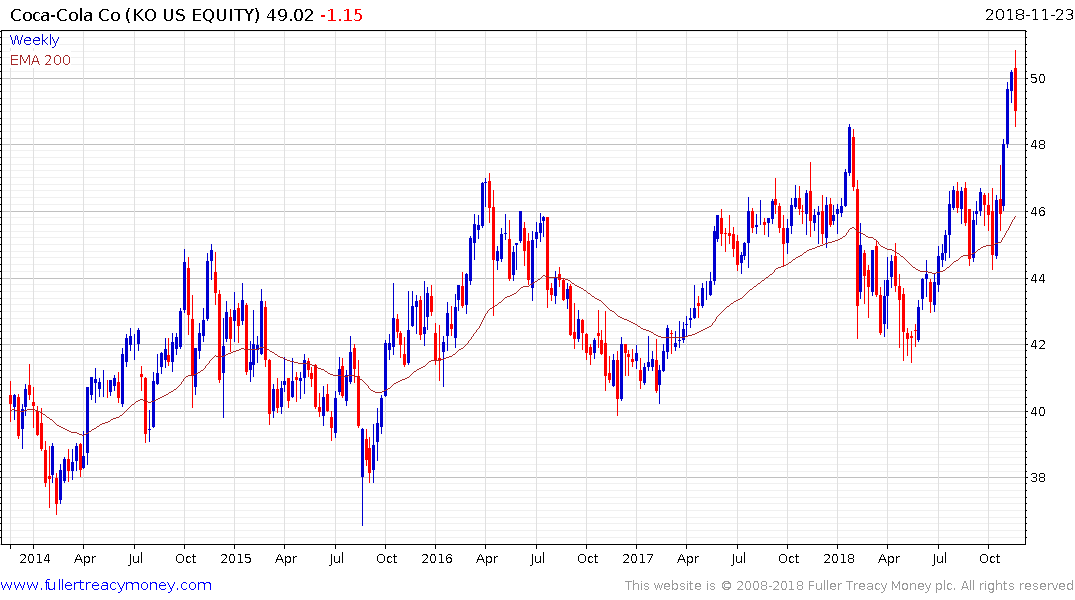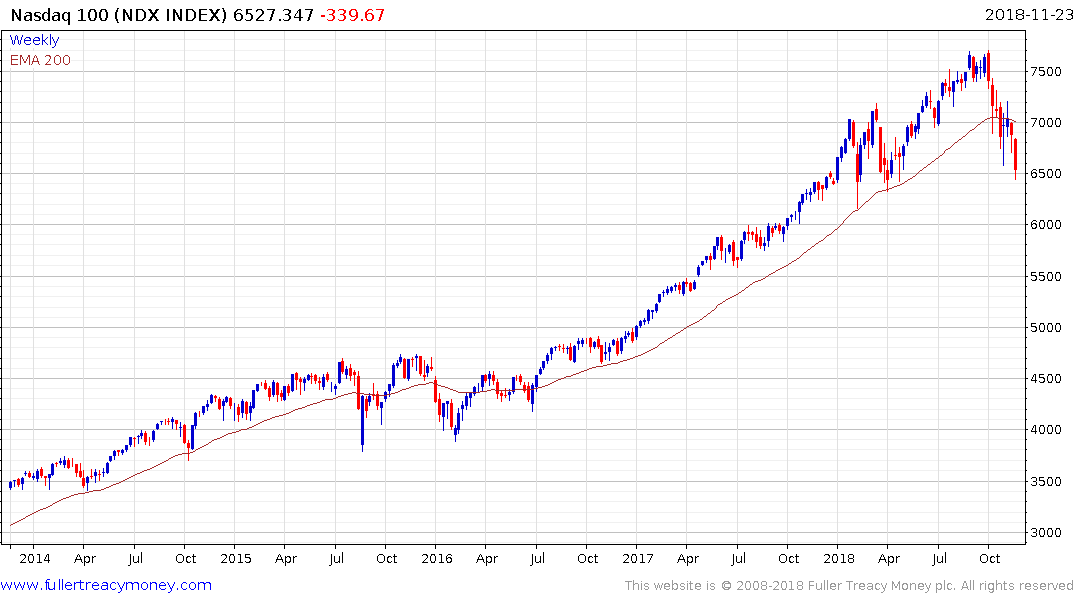2019 US Equity Outlook: The Return of Risk
Thanks to a subscriber for this report for Goldman Sachs which may be of interest. Here is a section:
Here is a link to the full report.
Here is a section from it:
A higher US equity market, a lower recommended allocation to stocks, and a shift to higher quality companies summarizes our forecast for 2019. We forecast S&P 500 will generate a modest single-digit absolute return in 2019. The risk-adjusted return will be less than half the long-term average. Cash will represent a competitive asset class to stocks for the first time in many years.
Base Case (50% probability): S&P 500 closes 2018 at 2850, and then climbs by n 5% to reach 3000 at year-end 2019. We forecast EPS will grow by 6% to $173 in 2019 and by 4% to $181 in 2020. Consensus growth equals 8% and 10%. P/E multiple will remain stable at 16x. Valuation has already declined by 12% YTD.
Downside Case (30% probability): As 2019 progresses, investors may become increasingly concerned about the risk of a recession in 2020. Earnings estimates are slashed, the P/E contracts to 14x, and S&P 500 ends 2019 at 2500.
Upside Case (20% probability): Economic growth remains stronger for longer n than investors expect. Consensus 2020 EPS estimates are trimmed only slightly and P/E multiple returns to its recent high of 18x. S&P 500 ends 2019 at 3400.
US equities will post a higher 2019 absolute total return (7%) than cash n (T-Bills, 3%) and 10-year US Treasuries (1%). However, the risk-adjusted return for stocks will be less than half the long-term average (0.5 vs. 1.1).
At The Chart Seminar we talk about how the majority of people predict markets. The simple answer is we tend to predict what we see. Over the course of the last eight weeks a very notable rotation into higher quality companies has been underway. Interest rate sensitive businesses have been the big decliners while those angled towards the consumer, with long records of dividend increases have been the clearest outperformers. Since that is what has been working it is the easiest prognostication to think it will persist.

The persistence of the rotation is dependent on the outlook for interest rates. The 10-year Treasury yield has pulled back to test the 3% level and will need to hold that area if medium-term supply dominance is to continue to be given the benefit of the doubt.

Coca Cola posted a downside key reversal on Monday to signal a peak of at least near-term significance and the unwinding of its short-term overbought condition.

Meanwhile the Nasdaq-100 is testing the region of its March lows and will need to rally more impressively to convince investors a return to demand dominance is underway.


